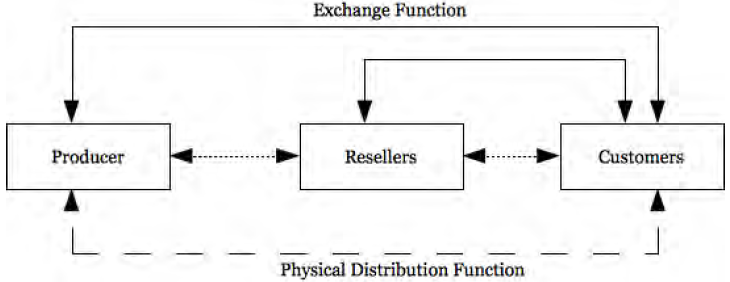Just as with the other elements of the firm's marketing program, distribution activities are undertaken to facilitate the exchange between marketers and consumers. There are two basic functions performed between the manufacturer and the ultimate consumer (See Figure 10.1).1 The first, called the exchange function, involves sales of the product to the various members of the channel of distribution. The second, the physical distribution function, moves products through the exchange channel, simultaneously with title and ownership. Decisions concerning both of these sets of activities are made in conjunction with the firm's overall marketing plan and are designed so that the firm can best serve its customers in the market place. In actuality, without a channel of distribution the exchange process would be far more difficult and ineffective.

The key role that distribution plays is satisfying a firm’s customers and achieving a profit for the firm. From a distribution perspective, customer satisfaction involves maximizing time and place utility to: the organization's suppliers, intermediate customers, and final customers. In short, organizations attempt to get their products to their customers in the most effective ways. Further, as households find their needs satisfied by an increased quantity and variety of goods, the mechanism of exchange—i.e. the channel—increases in importance.
- 3166 reads






